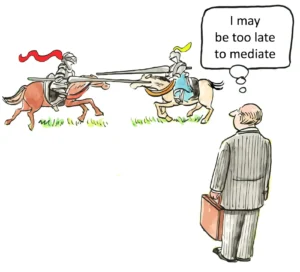What is the process for bringing my fiancé(e) to the U.S. on a K-1 visa?
The K-1 visa process enables U.S. citizens to bring their foreign fiancé(e)s to the United States with the intention of getting married within 90 days of arrival. This nonimmigrant visa serves as a gateway for couples who have met in person within the past two years and have a genuine intention to establish a life together in America. Understanding the comprehensive requirements, documentation, and procedural steps involved in the K-1 visa application is essential for couples seeking to navigate this complex immigration law pathway successfully. With proper preparation and attention to detail, couples can avoid common pitfalls that lead to delays or denials, ultimately achieving their goal of building a life together in the United States.
Understanding the K-1 Fiancé(e) Visa Fundamentals
The K-1 visa, commonly known as the fiancé visa, is specifically designed for foreign nationals engaged to U.S. citizens who plan to marry within 90 days of entering the United States. This visa category represents a unique hybrid in the immigration system, functioning as a nonimmigrant visa initially but serving as a pathway to permanent residency after marriage.
The fundamental purpose of the K-1 visa is to allow couples to be together in the United States for their wedding and subsequent life together. Unlike marriage-based immigrant visas that require couples to marry before the foreign spouse can enter the U.S., the K-1 visa permits the marriage to take place on American soil. This arrangement offers significant advantages for couples who wish to have their wedding ceremony in the United States with family and friends present, or who face legal or cultural barriers to marrying in the foreign fiancé(e)’s home country.
It’s important to understand that the K-1 visa comes with strict time limitations and requirements. Once issued, the visa is valid for a single entry into the United States within a six-month period. After entering the U.S., the foreign fiancé(e) has exactly 90 days to marry the U.S. citizen petitioner. This 90-day timeframe cannot be extended under any circumstances. If the marriage does not occur within this window, the foreign fiancé(e) must depart the United States or risk facing deportation proceedings and potential bars to future immigration benefits. This strict timeline underscores the importance of having wedding plans well-established before the foreign fiancé(e) arrives in the United States.
Key Eligibility Requirements for K-1 Visa Applicants
Before embarking on the K-1 visa application journey, couples must ensure they meet all eligibility requirements established by U.S. immigration law. These requirements are designed to verify the legitimacy of the relationship and protect against potential immigration fraud.
The most fundamental requirement is that both parties must be legally free to marry. This means that any previous marriages must have been legally terminated through divorce, annulment, or death. Documentation proving the termination of prior marriages must be submitted with the application. Additionally, the relationship must not violate any legal prohibitions against marriage, such as consanguinity laws that prohibit marriages between close relatives. Same-sex couples are eligible for K-1 visas, provided their relationship meets all other requirements and the marriage will be legally recognized in the state where it will take place.
Another critical requirement is that the couple must have met in person at least once within the two years preceding the filing of the petition. This in-person meeting requirement helps immigration authorities verify that the relationship is genuine and not merely a “mail-order” arrangement. The meeting must involve actual physical presence – video calls, phone conversations, and other forms of remote communication do not satisfy this requirement. While waivers of this requirement are theoretically available in cases of extreme hardship or where in-person meetings would violate strict cultural or religious customs, such waivers are rarely granted in practice. The in-person meeting must be thoroughly documented with evidence such as photographs together, travel itineraries, hotel reservations, and passport stamps showing entry to the relevant country.
The Step-by-Step K-1 Visa Application Process
The K-1 visa process involves multiple stages and several government agencies, including U.S. Citizenship and Immigration Services (USCIS), the National Visa Center (NVC), and the U.S. Department of State through its embassies and consulates worldwide. Understanding each step in this process helps couples navigate the journey more effectively.
The process begins with the U.S. citizen filing Form I-129F, Petition for Alien Fiancé(e), with USCIS. This petition establishes the eligibility of both parties and the legitimacy of their relationship. Along with the completed form, the petitioner must submit extensive documentation, including proof of U.S. citizenship, evidence of having met in person within the previous two years, and documentation of any prior marriages and their termination. Photographs of the couple together, correspondence records, and statements from friends and family who can attest to the relationship are also typically included. Once submitted, the petition undergoes initial processing at a USCIS service center, which currently takes approximately 4-7 months. During this time, USCIS may issue a Request for Evidence (RFE) if additional documentation is needed to establish eligibility.
After USCIS approves the petition, it is forwarded to the National Visa Center, which assigns a case number and forwards the petition to the U.S. embassy or consulate in the foreign fiancé(e)’s country. The consular office then contacts the foreign fiancé(e) with instructions for completing the visa application process. This includes submitting Form DS-160 (Online Nonimmigrant Visa Application), paying the visa application fee, gathering additional required documents, and scheduling both a medical examination with an approved physician and an in-person interview at the embassy or consulate. The medical examination must be conducted by a physician authorized by the embassy and typically includes screening for communicable diseases, vaccinations, and a general health assessment. The interview is a critical component of the process, during which a consular officer evaluates the authenticity of the relationship and the couple’s intention to marry within 90 days of the foreign fiancé(e)’s arrival in the United States.
Essential Documentation for a Successful K-1 Petition
Proper documentation forms the backbone of a successful K-1 visa application. Immigration authorities rely heavily on the submitted evidence to determine whether the relationship is genuine and whether all eligibility requirements have been met. Comprehensive and well-organized documentation significantly increases the chances of approval.
For the initial I-129F petition, the U.S. citizen must provide proof of citizenship (such as a U.S. passport, birth certificate, or naturalization certificate), a signed statement of intent to marry within 90 days of the foreign fiancé(e)’s arrival, passport-style photographs of both parties, and evidence of having met in person within the previous two years. This meeting evidence should be substantial and might include photographs together in recognizable locations, travel itineraries, boarding passes, hotel reservations, and receipts from activities enjoyed together. If either party was previously married, documentation showing the legal termination of those marriages must also be included. Many successful petitioners also include a detailed timeline of the relationship’s development, including how they met, when they became engaged, and their plans for the future.
For the consular phase of the process, the foreign fiancé(e) must gather additional documentation, including a valid passport, birth certificate, police certificates from all countries where they have lived for more than six months since age 16, medical examination results, financial evidence, and additional relationship evidence. The financial evidence typically includes Form I-134, Affidavit of Support, completed by the U.S. citizen sponsor to demonstrate the ability to financially support the foreign fiancé(e) and prevent them from becoming a public charge. Supporting financial documentation might include tax returns, employment verification, bank statements, and asset information. Relationship evidence at this stage often includes more recent communications, updated photographs, and evidence of ongoing contact since the filing of the I-129F petition. All non-English documents must be accompanied by certified translations. Organizing these documents logically, with a cover letter explaining the contents and a table of contents, can help consular officers review the application more efficiently.
Proving a Bona Fide Relationship to Immigration Authorities
Demonstrating the authenticity of the relationship is perhaps the most crucial aspect of the K-1 visa process. Immigration authorities are vigilant about detecting fraudulent relationships entered solely for immigration benefits, making it essential for genuine couples to provide compelling evidence of their bona fide relationship.
Effective relationship evidence typically includes a combination of documentary proof and personal narratives that together tell the story of how the couple met, how their relationship developed, and their plans for a future together. Documentary evidence might include dated photographs showing the couple together over time (particularly in family settings or at significant events), communication records showing regular contact (such as email exchanges, text message logs, phone records, and social media interactions), evidence of financial ties (such as joint bank accounts, money transfers between the couple, or jointly owned property), travel records documenting visits to see each other, and statements from third parties who can attest to the relationship’s authenticity. These third-party statements, often called affidavits, should come from people who know both parties and can provide specific examples of having observed the couple together or having knowledge of their relationship development.
Beyond documentary evidence, couples should be prepared to articulate their relationship narrative clearly and consistently. This includes being able to explain how they met, what attracted them to each other, how they maintained their relationship despite geographical separation, how and when they decided to get engaged, and their specific plans for their wedding and future life together. Consistency is key – both parties should be able to provide similar accounts of significant relationship milestones and future plans. During the consular interview, the foreign fiancé(e) will likely be asked detailed questions about the U.S. citizen partner, their relationship history, and their wedding plans. Preparation for these questions, without rehearsing scripted answers, helps demonstrate the relationship’s authenticity. Immigration officers are trained to detect inconsistencies or vague responses that might indicate a fraudulent relationship, making thorough preparation essential for the interview phase.
Financial Requirements and the Affidavit of Support
The K-1 visa process includes financial requirements designed to ensure that the foreign fiancé(e) will not become a public charge after entering the United States. Understanding and properly documenting financial eligibility is crucial for visa approval.
The primary financial document required is Form I-134, Affidavit of Support, which the U.S. citizen sponsor must complete to demonstrate the ability to financially support the foreign fiancé(e). This form requires detailed information about the sponsor’s income, employment, assets, and liabilities. The sponsor must meet specific income thresholds based on the Federal Poverty Guidelines – typically at least 100% of the poverty level for their household size, including the foreign fiancé(e). For 2025, this means a minimum annual income of $20,440 for a household of two people. If the sponsor’s income alone does not meet the threshold, additional assets may be considered, such as savings accounts, property, or investments. In some cases, a joint sponsor (typically a family member with sufficient income) may provide an additional affidavit of support to help meet the financial requirements.
Supporting documentation for the affidavit of support typically includes the sponsor’s most recent federal income tax returns, W-2 forms, recent pay stubs, employment verification letter, and bank statements. If assets are being used to supplement income, documentation of those assets’ value must also be provided. It’s important to note that the I-134 for the K-1 visa is a temporary affidavit of support. After marriage and when applying for adjustment of status, the U.S. citizen spouse will need to file the more permanent Form I-864, Affidavit of Support. The financial requirements for the I-864 are similar but slightly more stringent, requiring the sponsor to maintain an income of at least 125% of the Federal Poverty Guidelines. Couples should be aware of this future requirement when planning their financial documentation for the K-1 visa application.
The K-1 Visa Interview: Preparation and Expectations
The consular interview represents the culmination of the K-1 visa process and often determines whether the visa will be granted. Thorough preparation for this interview significantly increases the chances of a successful outcome.
The interview typically takes place at the U.S. embassy or consulate in the foreign fiancé(e)’s country of residence. Only the foreign fiancé(e) attends this interview, though in some cases, the U.S. citizen partner may be present in the waiting area for moral support. Before the interview, the foreign fiancé(e) must complete a medical examination with an embassy-approved physician, submit the required documentation, and pay all applicable fees. On the day of the interview, the foreign fiancé(e) should arrive early with all original documents, including the interview appointment letter, passport, birth certificate, police certificates, medical examination results, financial documentation, and relationship evidence. Professional attire is recommended to make a positive impression.
During the interview, a consular officer will ask questions to verify the information provided in the application and assess the authenticity of the relationship. Common questions cover how and when the couple met, details about the U.S. citizen partner (such as their birthday, occupation, or family members), the engagement story, wedding plans, and future living arrangements. The officer may also inquire about any significant age differences, language barriers, cultural differences, or previous marriages. The foreign fiancé(e) should answer questions truthfully and confidently, providing detailed responses without volunteering unnecessary information. If the officer is satisfied with the responses and documentation, the visa may be approved on the spot. However, in some cases, the officer may request additional documentation or place the application in administrative processing for further review. If approved, the visa is typically issued within a week, allowing the foreign fiancé(e) to travel to the United States within a six-month validity period.
Common Reasons for K-1 Visa Denials and How to Avoid Them
Understanding the frequent causes of K-1 visa denials helps couples proactively address potential issues and increase their chances of approval. Approximately one in four K-1 visa applications faces denial, often due to preventable errors or oversight.
Insufficient evidence of a bona fide relationship represents the most common reason for denial. Immigration authorities look for compelling proof that the relationship is genuine and not entered solely for immigration benefits. Applications with minimal or unconvincing relationship evidence often face scrutiny or outright denial. To avoid this pitfall, couples should provide abundant evidence of their relationship history, including photographs together, detailed communication records, travel documentation, and statements from friends and family who can attest to the relationship’s authenticity. Evidence should demonstrate the development of the relationship over time and ongoing communication between visits. Particularly important is documentation of having met in person within the two years preceding the petition filing, as failure to meet this requirement almost always results in denial unless a qualifying waiver applies.
Other common grounds for denial include inadequate financial support documentation, criminal history issues, health-related grounds, and previous immigration violations. Financial support concerns arise when the U.S. citizen sponsor cannot demonstrate sufficient income or assets to support the foreign fiancé(e). Criminal convictions, particularly for violent crimes, drug offenses, or moral turpitude, may render the foreign fiancé(e) inadmissible to the United States. Certain communicable diseases or failure to obtain required vaccinations may also result in medical inadmissibility. Previous immigration violations, such as overstaying a visa, entering the U.S. without inspection, or misrepresenting material facts on visa applications, can lead to temporary or permanent bars to admission. To avoid these issues, couples should ensure complete financial documentation, disclose all criminal history (even minor offenses), complete all required medical examinations and vaccinations, and address any previous immigration violations through appropriate waivers if available.
After Arrival: Marriage and Adjustment of Status Process
The K-1 visa journey continues after the foreign fiancé(e) arrives in the United States, with important deadlines and procedures that must be followed to maintain legal status and progress toward permanent residency.
Upon arrival, the foreign fiancé(e) is admitted for a non-extendable period of 90 days, during which the couple must marry. This 90-day timeframe is strict – if marriage does not occur within this period, the foreign fiancé(e) must depart the United States or face potential removal proceedings and future immigration difficulties. After marriage, the foreign spouse becomes eligible to apply for adjustment of status to permanent resident (green card holder) by filing Form I-485, Application to Register Permanent Residence or Adjust Status. This application is typically submitted along with Form I-765, Application for Employment Authorization, and Form I-131, Application for Travel Document, which allow the foreign spouse to work and travel internationally while the adjustment application is pending. The adjustment of status package also includes Form I-864, Affidavit of Support, which is a more permanent financial commitment than the I-134 submitted during the K-1 visa process.
The adjustment of status process involves submitting extensive documentation, including the marriage certificate, proof that the marriage is bona fide, financial evidence, medical examination results, and biographical information. After submission, the couple will receive a biometrics appointment notice for fingerprinting and background checks. Several months later, they will be scheduled for an interview at their local USCIS office, where an immigration officer will verify the authenticity of the marriage and determine eligibility for permanent residency. If approved, the foreign spouse typically receives conditional permanent residency valid for two years if the marriage was less than two years old at the time of approval. Ninety days before this conditional status expires, the couple must file Form I-751, Petition to Remove Conditions on Residence, with additional evidence that the marriage remains genuine and ongoing. After successful removal of conditions, the foreign spouse receives a 10-year permanent resident card and may eventually become eligible for U.S. citizenship.
Alternative Options When K-1 Visa Isn’t Ideal
While the K-1 visa works well for many couples, alternative immigration pathways may better suit certain situations. Understanding these options helps couples make informed decisions based on their specific circumstances.
The CR-1/IR-1 spouse visa represents the primary alternative to the K-1 visa. This pathway requires the couple to marry before beginning the immigration process, after which the U.S. citizen files a petition for their foreign spouse. Unlike the K-1 visa, which requires an additional adjustment of status application after marriage, the spouse visa grants permanent residency immediately upon entry to the United States. This option eliminates the 90-day marriage requirement and the need for a separate adjustment of status application, potentially resulting in cost savings and earlier work authorization for the foreign spouse. The spouse visa may be particularly advantageous for couples who face no legal or cultural barriers to marrying abroad, who want to avoid the uncertainty of the 90-day timeframe, or who anticipate needing work authorization soon after arrival in the United States. However, the spouse visa process typically takes longer overall than the K-1 visa process, with current processing times ranging from 12-18 months compared to the K-1’s 8-12 months.
For couples facing unique hardships or circumstances, other visa categories might be considered. The K-3 visa, though rarely used today due to processing inefficiencies, allows foreign spouses of U.S. citizens to enter the United States while their immigrant visa petition is pending. Various nonimmigrant visas, such as student visas, work visas, or tourist visas, might allow the couple to be together temporarily in the United States, though these should never be used with the preconceived intent to adjust status, as this could constitute visa fraud. In cases involving extreme hardship or danger to the foreign partner, humanitarian parole or asylum might be considered. Each alternative comes with its own eligibility requirements, advantages, and disadvantages, making it essential for couples to research thoroughly or consult with an immigration attorney to determine the most appropriate pathway for their situation.
Legal Assistance vs. Self-Filing: Making the Right Choice
Deciding whether to navigate the K-1 visa process independently or with professional legal assistance represents an important early decision for couples. Both approaches have merits, and the right choice depends on case complexity, comfort with legal procedures, and financial considerations.
Self-filing offers significant cost savings, as couples avoid legal fees that typically range from $1,500 to $3,000 for K-1 visa assistance. This approach works well for straightforward cases where both parties have clean immigration and criminal histories, meet all eligibility requirements clearly, and feel comfortable researching immigration procedures and completing forms accurately. Many resources exist to support self-filers, including USCIS instruction guides, online forums, and community organizations that provide free or low-cost assistance. Self-filing also gives couples complete control over their case, allowing them to track progress directly and respond immediately to any requests or concerns that arise during processing. However, this approach requires substantial time investment to research requirements, prepare documentation, and monitor case progress. Even minor errors in forms or documentation can lead to delays, requests for evidence, or denials, potentially extending the separation period for the couple.
Professional legal assistance, while more costly upfront, offers significant advantages, particularly for complex cases. Immigration attorneys bring expertise in current laws, regulations, and procedural nuances that may not be readily apparent from public resources. They can identify potential issues before filing, recommend strategies to strengthen applications, and prepare couples for interviews and potential challenges. Attorney representation often results in more complete initial filings, reducing the likelihood of requests for evidence or denials that extend processing times. For cases involving previous immigration violations, criminal history, prior visa denials, unusual financial situations, or medical issues, professional guidance can be particularly valuable in addressing these complications effectively. Many attorneys also offer payment plans or tiered service options to make legal assistance more accessible. When selecting an attorney, couples should verify credentials, seek recommendations, and choose someone with specific experience in K-1 visa cases rather than general immigration practice.
Navigating Cultural and Practical Adjustments After Arrival
Beyond the legal procedures, the K-1 visa journey involves significant cultural and practical adjustments as the foreign fiancé(e) transitions to life in the United States. Preparing for these challenges helps couples navigate the post-arrival period more smoothly.
Cultural adaptation represents one of the most significant challenges for many foreign fiancé(e)s. Even with previous visits to the United States, living permanently in a new culture differs dramatically from visiting as a tourist. Foreign partners often experience culture shock manifesting as feelings of disorientation, frustration, or homesickness as they adjust to different social norms, communication styles, and daily routines. American partners can help by acknowledging these challenges, demonstrating patience during the adjustment period, and creating opportunities to incorporate elements of the foreign partner’s culture into their shared life. Many couples find success in establishing traditions that honor both cultural backgrounds, such as celebrating holidays from both countries or incorporating diverse culinary traditions into family meals.
Language barriers frequently compound cultural adjustment challenges, even for foreign fiancé(e)s with strong English skills. The nuances of colloquial expressions, regional accents, and context-dependent communication can create misunderstandings or frustration. Additionally, the foreign partner may struggle with expressing complex emotions or thoughts in their non-native language, particularly during stressful situations. Couples can address these challenges by establishing clear communication strategies, perhaps setting aside time for language practice, enrolling in formal English classes if needed, or using translation tools during particularly complex conversations. American partners should remain patient and avoid interpreting language difficulties as intellectual limitations or lack of effort.
Financial adjustment presents another significant challenge, as many foreign fiancé(e)s face employment restrictions during the initial adjustment of status period. Without immediate work authorization, foreign partners often experience a loss of financial independence and professional identity. This situation can create relationship strain if not properly addressed through open communication about financial expectations and responsibilities. Couples should develop clear financial plans for the period before work authorization, including budgeting for personal expenses that allow the foreign partner some financial autonomy. Additionally, foreign partners can use this period to research professional licensing requirements, explore educational opportunities, or volunteer in their field to maintain professional connections and skills while awaiting work authorization.
Social integration challenges often emerge as foreign fiancé(e)s work to build new support networks in the United States. The loss of established friendships, family connections, and community involvement can lead to isolation and loneliness. American partners can facilitate social integration by introducing their fiancé(e) to friends and family gradually, identifying community groups or activities aligned with the foreign partner’s interests, and connecting with cultural organizations representing the foreign partner’s heritage. Many couples also benefit from connecting with other international couples who have navigated similar transitions, either through local meetups or online support communities specifically for K-1 visa recipients.
Healthcare navigation represents a practical challenge that many foreign fiancé(e)s find particularly daunting. The U.S. healthcare system differs significantly from those in other countries, with its complex insurance requirements, referral processes, and cost structures. American partners should help explain health insurance options, assist with finding appropriate healthcare providers, and ensure the foreign partner understands how to access both routine and emergency care. Additionally, couples should address any vaccination requirements or medical conditions identified during the immigration medical examination, ensuring appropriate follow-up care after arrival in the United States.
Transportation independence often emerges as an unexpected challenge, particularly for foreign partners from countries with extensive public transportation systems. Learning to drive in the United States, understanding local traffic laws, obtaining a driver’s license, and becoming comfortable with car-dependent lifestyles can represent significant adjustments. American partners can support this transition by helping their fiancé(e) understand local transportation options, providing driving practice in low-stress environments, and assisting with driver’s license applications. In areas with limited public transportation, couples should develop interim mobility strategies while the foreign partner works toward transportation independence.
By acknowledging and preparing for these cultural and practical challenges, K-1 visa couples can develop strategies that support successful adjustment and strengthen their relationship during this transitional period. The post-arrival phase represents not merely a legal process but a profound life transition that, when navigated thoughtfully, can build resilience and deepen the couple’s connection as they begin their married life together in the United States.
Citations:
- https://www.boundless.com/immigration-resources/k-1-fiancee-visa-explained/
- https://www.uscis.gov/i-129f
- https://www.lawfirm4immigrants.com/reason-for-fiancee-visa-denial/
- https://relislaw.com/7-shocking-mistakes-couples-make-when-starting-their-fiance-visa-application/
- https://immigrationlawneworleans.com/immigration-law/4-common-k1-visa-mistakes-you-should-know-about/
- https://shorelineimmigration.com/family-immigration/5-reasons-for-k-1-visa-denial/
- https://www.usimmivisa.com/insights/2025/january/how-to-prove-a-bonafide-relationship-for-k-1-vis/
- https://immigrationhelpla.com/k1-fiance-visa/
- https://www.colombianvisaservices.com/blog/reasons-for-denying-a-k1-visa
- https://visarefusal.com/inadmissibility/k-1-visa-refusals/
- https://www.usa.gov/fiance-visa
- https://www.prideimmigration.com/common-challenges-k-1-visa-applicants-immigration-attorney-can-help/
- https://www.prideimmigration.com/what-to-do-if-your-k1-visa-petition-is-denied/
- https://www.uscis.gov/sites/default/files/document/guides/K1_Process_V11.pdf
- https://www.uscis.gov/family/family-of-us-citizens/visas-for-fiancees-of-us-citizens
- https://travel.state.gov/content/travel/en/us-visas/immigrate/family-immigration/nonimmigrant-visa-for-a-fiance-k-1.html
- https://immigrateme.com/avoid-these-5-pitfalls-when-applying-for-your-k-1-fiance-visa/
- https://immigrateme.com/avoid-these-4-mistakes-when-applying-for-a-k-1-visa/
- https://urbinalawfirm.com/en/reasons-for-denial-of-k1-visa/
- https://www.markjacobslaw.com/avoid-these-4-mistakes-when-seeking-a-fiance-visa/
- https://immigrateme.com/the-k-1-fiance-visa-process-under-the-trump-administration/













